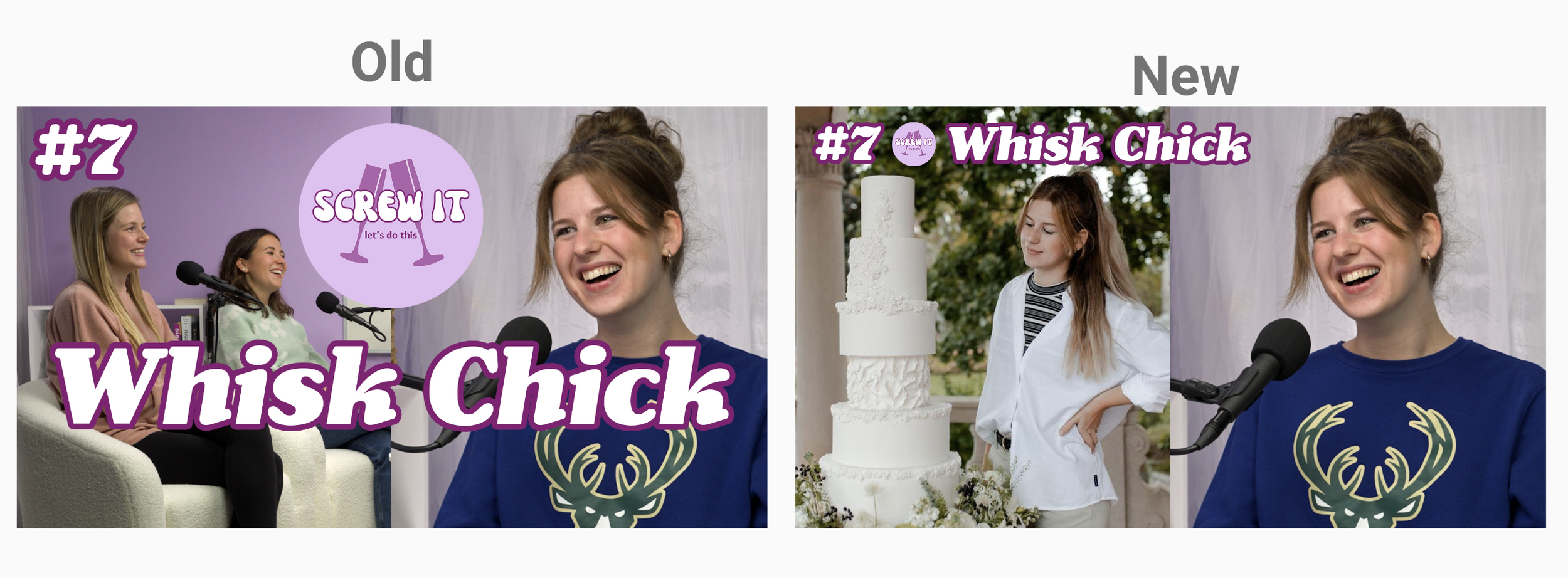What it really takes to produce a podcast
If you’ve been following Spoken Frame Media for a while, you may know of our venture into podcasting. In 2023, I wanted to learn the technical side of podcast production. I partnered with two friends and local entrepreneurs– Therese of Tricky Foods and Shelby of Miggy’s Bakes. With that, “Screw It, Let’s Do This” was born–a podcast where entrepreneurs share their stories.
Now, with over a year of production under our belts, we’ve learned a few things.
I recently shared our findings at an American Marketing Association event: After Hours - The Podcast Playbook. Keep reading for my key lessons learned!
You must be able to adapt
A year’s worth of consistent podcast production yields a wealth of data. To inform our strategy, we’re always analyzing different metrics like retention rate, click-through rate, episode downloads, and more.
Based on our data, we’ve made tweaks like restructuring episode titles, changing thumbnails, switching from weekly to biweekly releases, and nixing video altogether.
Content quality is more important than production quality
When I started this project, I was determined to create a podcast with the highest quality audio and video possible. That’s the Spoken Frame Media way, after all…
However, my hours spent editing quickly reached the point of diminishing returns. While it pains me to admit this, production quality is not a deal breaker for podcast creators (or listeners).
People listen for content.
Of course, really poor quality will hurt you, but as long as your volume is balanced and the sound is free of background noise, you’re good to go.
Social followers do not translate to podcast listeners
Initially, I saw podcasting as a top-of-the-funnel strategy. I expected to cast a wide net and attract a larger audience. Over time, this proved to be the opposite (for us, at least). We aren’t selling a product or service, the podcast itself is the product.
Shelby and Therese both came into this project with a combined Instagram following of over 35,000 people.
The podcast’s Instagram page has 2,000 followers.
The podcast itself has 450.
While we didn’t see the number of listeners we expected, it doesn’t mean they’re not engaged. Podcasting has proved a powerful bottom-of-the-funnel strategy with those you do listen, listening intently.
Podcasting might not be for you
Anyone can launch a podcast these days, and due to that, it is extremely competitive. Not to mention, time-consuming. Not only are you creating a content strategy and production schedule, but you’re also recording, editing, and marketing each episode. So ask yourself this: Does my company need a podcast?
If I’ve learned anything, it’s that podcasting is not a cure for all of your marketing needs. Certain industries will benefit more than others, and that comes down to two things:
Who is your audience? Is a podcast their preferred way of consuming content?
What is your goal? Is your podcast itself the product? Or would you use it as a platform to sell other products or services?
Follow “Screw it, let’s do this”
Ready to share your story? Let’s make it happen.
While Spoken Frame Media doesn’t offer podcasting services, we do specialize in story-driven, interview-style video. From company overviews to client testimonials, we know how to communicate your message to the right audience. Whether you want to promote your services, showcase your company culture, or attract future business, we’re here to help you share your story.




